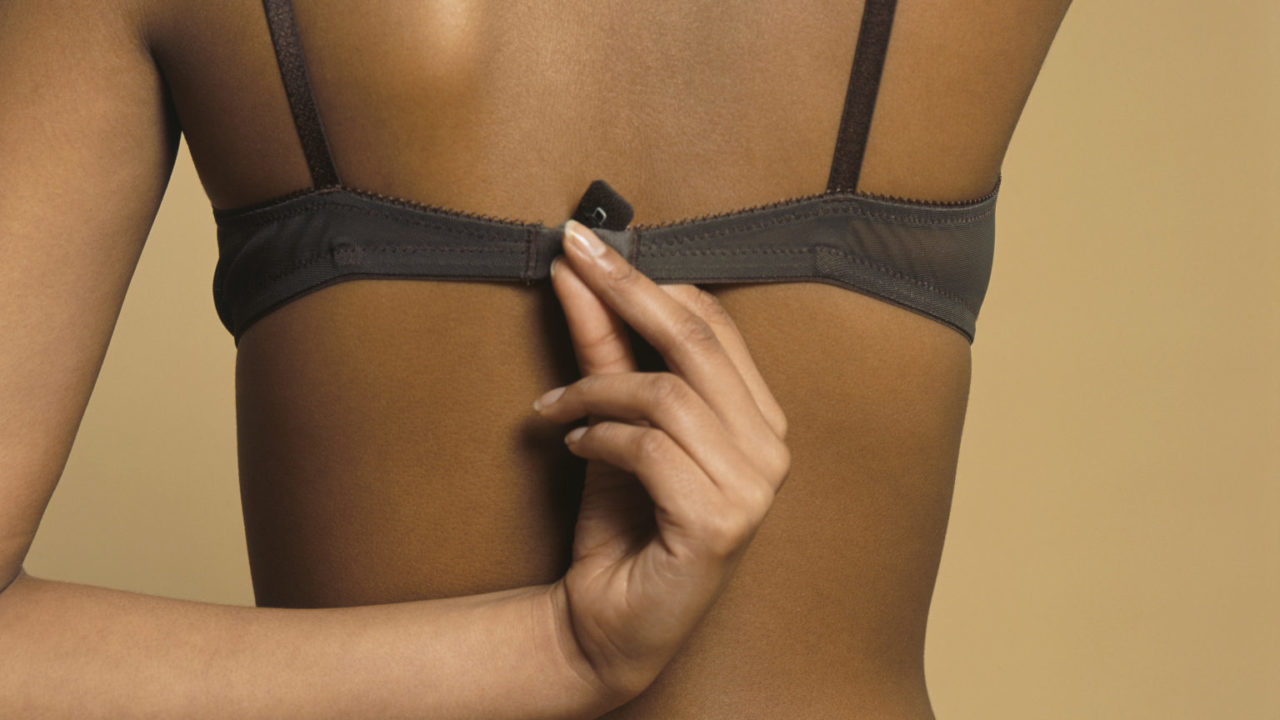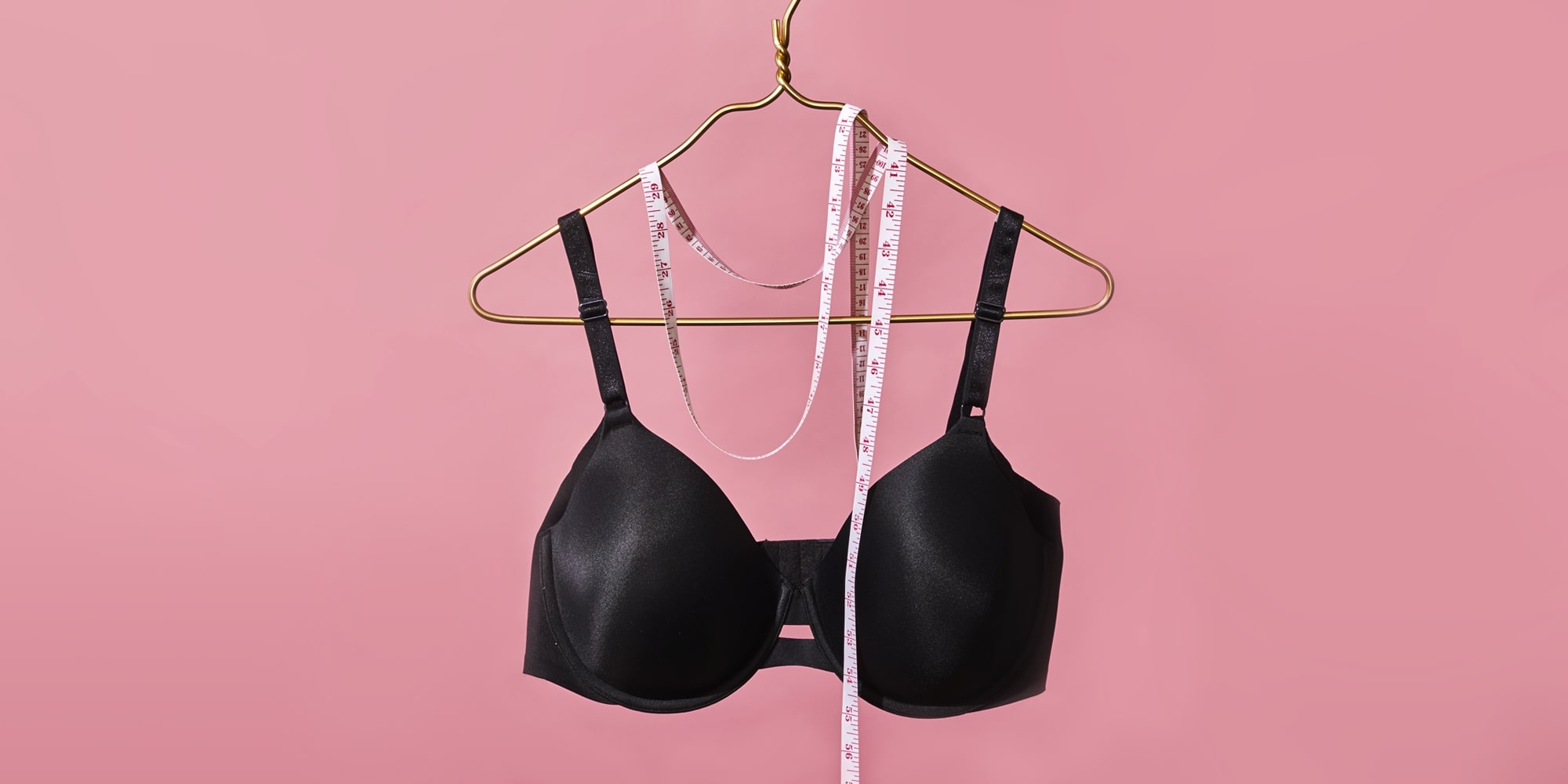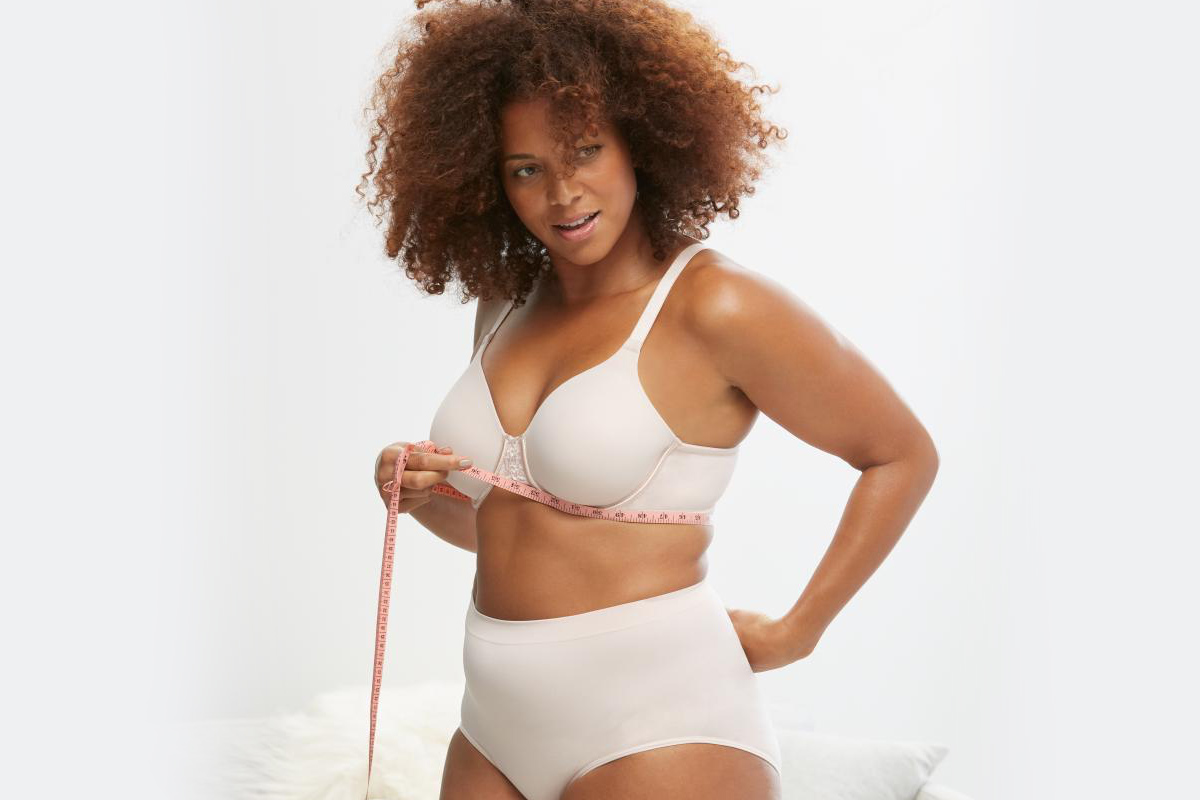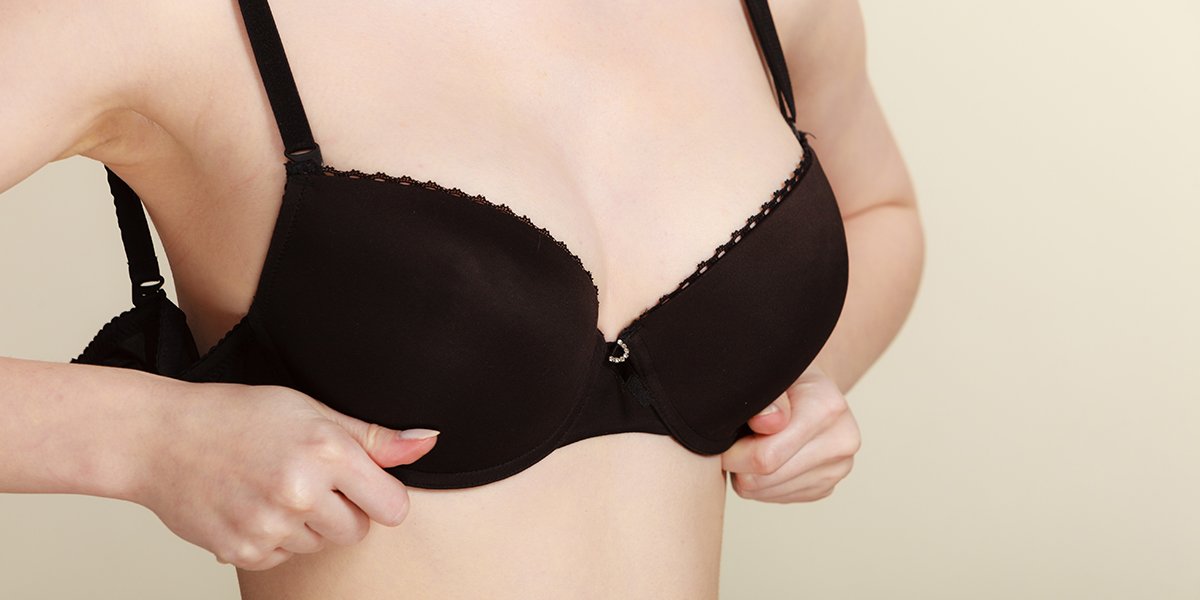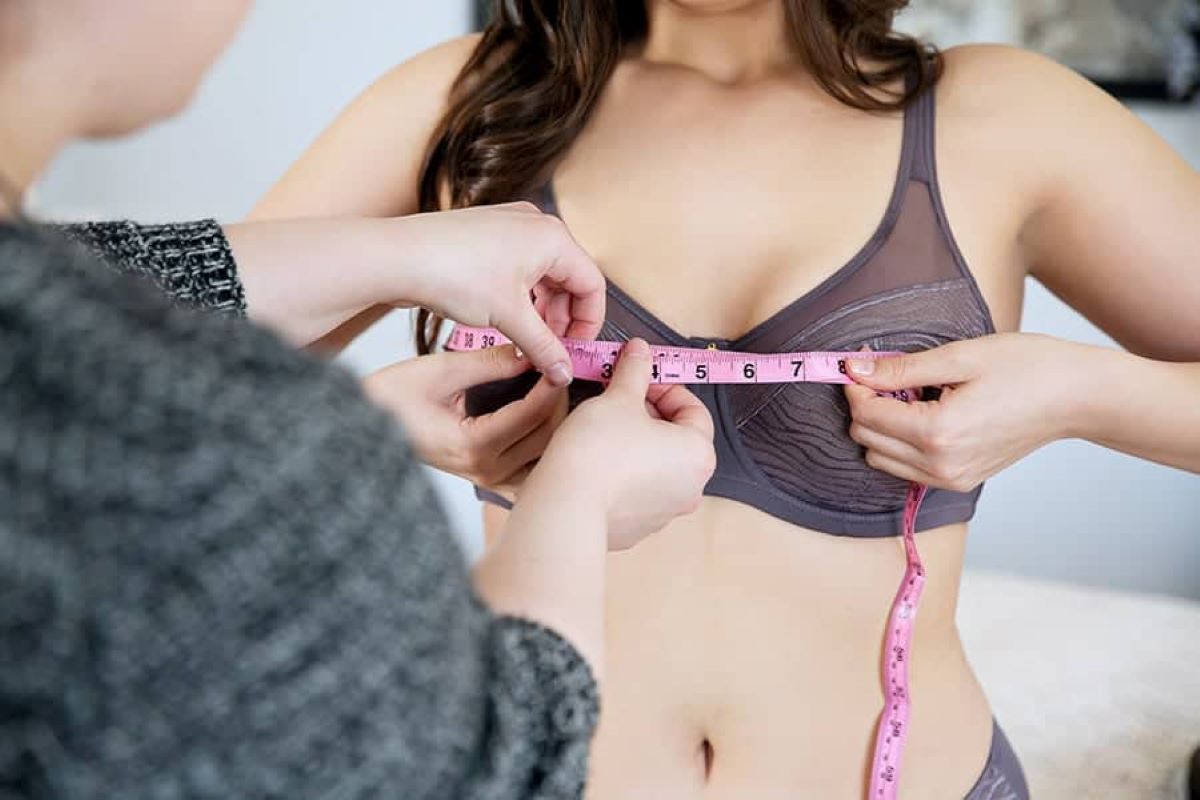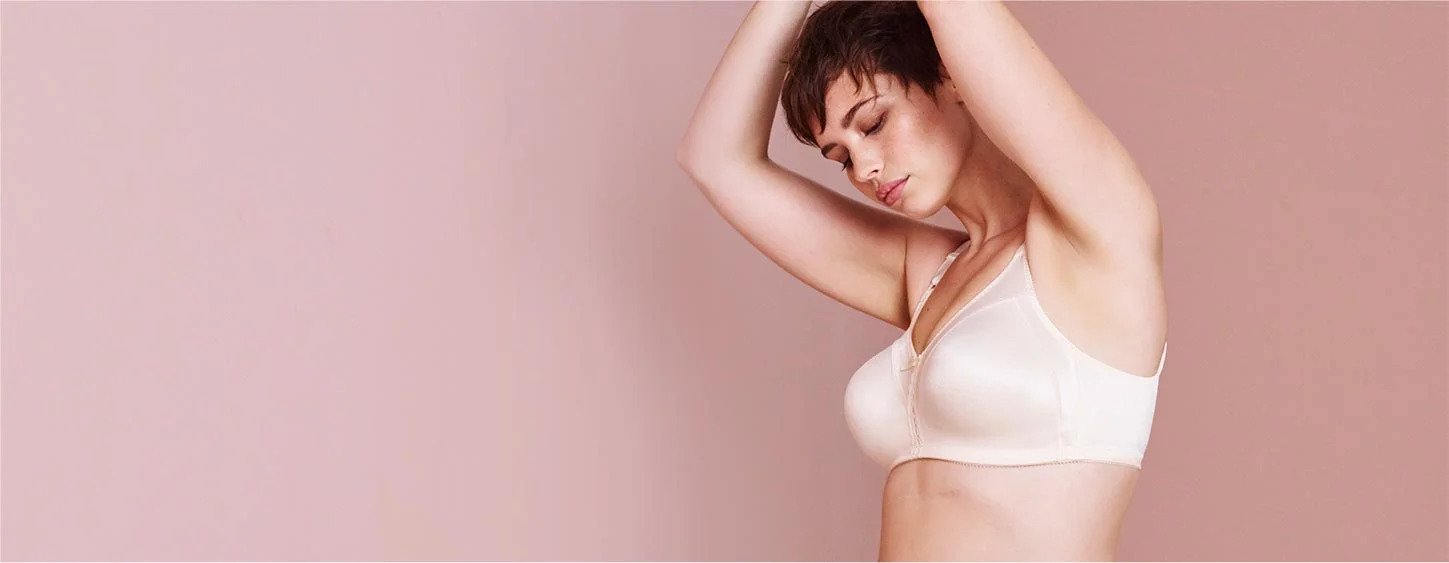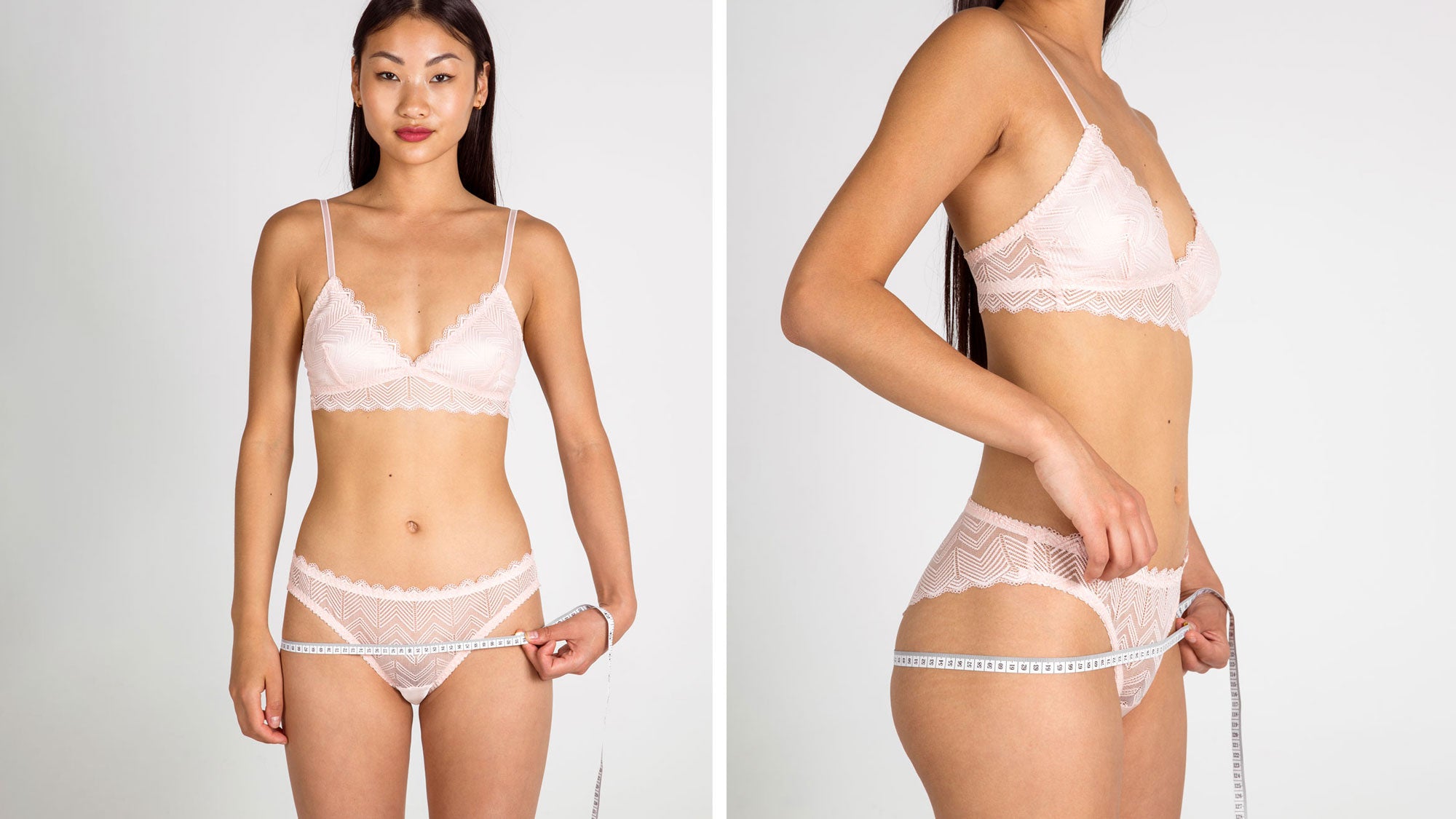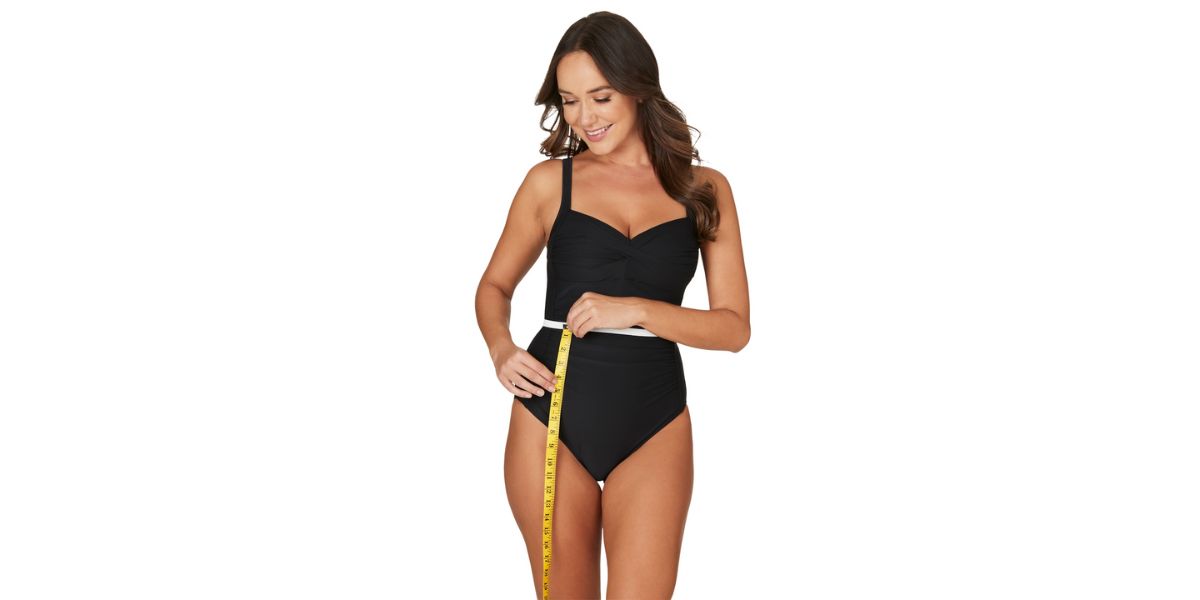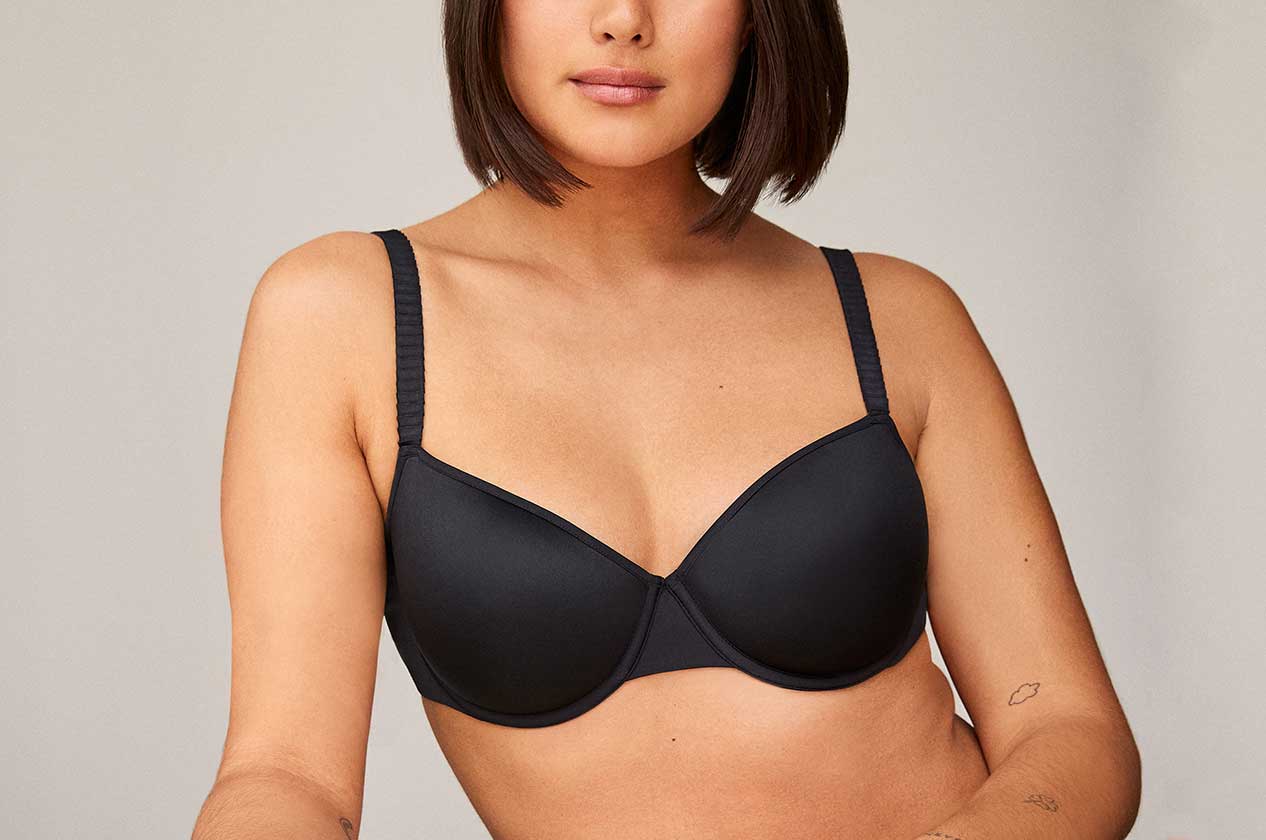Home>How-to Guides>For Women>How To Measure For Bra Fit
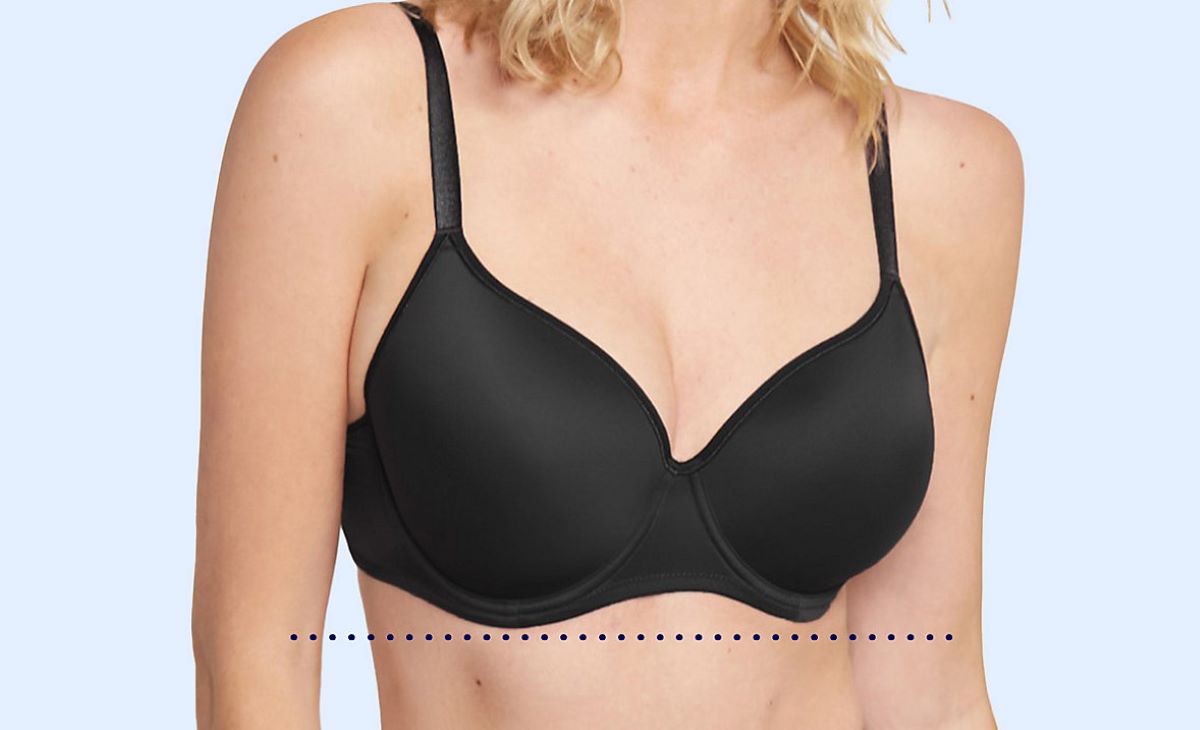

For Women
How To Measure For Bra Fit
Modified: September 23, 2023
Discover how to measure for the perfect bra fit. Our guide for women provides step-by-step instructions to ensure comfort and support.
(Many of the links in this article redirect to a specific reviewed product. Your purchase of these products through affiliate links helps to generate commission for Under-tec.com, at no extra cost. Learn more)
Table of Contents
Introduction
Welcome to the ultimate guide on how to measure for bra fit! Finding the perfect bra that not only looks beautiful but also provides the right amount of comfort and support can be a challenging task for many women. However, with the right knowledge and understanding of your body, you can ensure that you are wearing a bra that fits you perfectly, enhancing your confidence and overall well-being.
It’s no secret that wearing the wrong bra size can lead to a host of issues, including back and shoulder pain, discomfort, and even poor posture. This is why it is essential to prioritize finding the right fit. But how do you know if your bra is fitting correctly? In this comprehensive guide, we will walk you through the important factors to consider when determining your bra size and how to measure yourself accurately.
Understanding your bra size is crucial for achieving optimal comfort and support. It involves two primary measurements: the band size and the cup size. The band size determines the circumference of your ribcage, while the cup size indicates the volume of your breasts.
Measuring your band size involves taking measurements around your ribcage just beneath your bust. This measurement will be your band size. Meanwhile, determining your cup size requires measuring the fullest part of your bust and subtracting the band size from it.
Once you have these measurements, you can confidently shop for bras and try on different styles that cater to your specific body shape and personal preferences. Remember, an ill-fitting bra can lead to discomfort, the appearance of spillage, and sagging breasts, while a well-fitting bra will provide exceptional comfort and enhance your natural shape.
In the following sections, we will guide you through each step of the measuring process, explain how to identify signs of a proper fit, and address common bra fit problems. We will also provide useful tips to help you find a bra that not only fits well but also ensures maximum comfort throughout the day. So, let’s dive right in and unlock the secrets to achieving the perfect bra fit!
Importance of Bra Fit
Having a bra that fits properly is not just about aesthetics; it plays a crucial role in your overall comfort, support, and confidence. Here are some reasons why bra fit is of utmost importance:
- Comfort: A well-fitting bra ensures comfort throughout the day. The right band and cup size will prevent any pinching, digging, or discomfort that can arise from wearing an ill-fitting bra.
- Support: The primary function of a bra is to provide support to your breasts. A properly fitting bra will lift and support your bust, reducing strain on your back and shoulders. This is particularly important for women with larger breasts, as inadequate support can lead to discomfort and pain.
- Posture: Wearing a bra that fits well can significantly improve your posture by providing support to your breasts and gently aligning your spine. It can help prevent slouching and promote better overall body alignment.
- Enhanced Shape: A bra that fits properly can enhance your natural shape by providing the right amount of lift and support. It can give you a more flattering silhouette and make your clothes fit better, boosting your confidence and self-esteem.
- Prevent Breast Sagging: Wearing a bra that fits well can help prevent premature breast sagging. Proper support ensures that your breast tissue is adequately supported, reducing the chances of sagging over time.
- Improved Blood Circulation: An ill-fitting bra can restrict blood flow, leading to discomfort and even health issues. A properly fitting bra allows for proper circulation, ensuring the optimal functioning of your body.
While the importance of bra fit cannot be overstated, it is surprising how many women are wearing the wrong bra size without even realizing it. Factors such as weight gain or loss, pregnancy, breastfeeding, and hormonal changes can all affect our breast size and shape, making it essential to regularly reassess our bra size.
By understanding the significance of bra fit and taking the time to measure ourselves correctly, we can find bras that provide the support, comfort, and confidence we deserve. Throughout this guide, we will empower you with the knowledge and tools to determine your correct bra size and make informed choices when it comes to selecting bras that fit you perfectly.
Understanding Your Bra Size
Before you can find the perfect-fitting bra, it’s important to understand your bra size. A bra size consists of two components: the band size and the cup size. Let’s break down each of these measurements:
Measuring Band Size
The band size refers to the circumference of your ribcage just beneath your bust. To measure your band size accurately, follow these steps:
- Take a soft measuring tape and wrap it around your ribcage, just below your bust.
- Ensure that the tape is snug but not too tight, allowing for comfortable breathing.
- Take note of the measurement in inches.
This measurement will represent your band size. However, keep in mind that if you obtain an odd number measurement, it is recommended to round up to the nearest even number to find your band size. For example, if your measurement is 31 inches, round it up to 32 inches.
Measuring Cup Size
The cup size indicates the volume of your breasts. To measure your cup size, follow these steps:
- Stand in front of a mirror and measure around the fullest part of your bust, making sure the tape is parallel to the floor.
- Make a note of this measurement in inches.
Next, calculate your cup size by subtracting your band size from your bust measurement. Use the following chart as a guide:
- Difference of 1 inch = A cup
- Difference of 2 inches = B cup
- Difference of 3 inches = C cup
- Difference of 4 inches = D cup
- Difference of 5 inches = DD or E cup
- Difference of 6 inches = DDD or F cup
For example, if your band size is 34 inches and your bust measurement is 38 inches, your cup size would be D.
Keep in mind that these measurements serve as a starting point, and it’s important to try on bras in different sizes and styles to find the best fit for you. Every brand may have slight variations, so don’t be discouraged if you find that different brands fit differently.
Understanding your bra size is the first step in finding a bra that fits you perfectly. Armed with this knowledge, you can confidently explore various bra styles and brands, keeping your comfort and support at the forefront of your decision-making process.
Measuring Band Size
Accurately measuring your band size is crucial for finding a bra that fits comfortably and provides adequate support. Here’s a step-by-step guide on how to measure your band size:
- Start by wearing a non-padded bra or no bra at all to get the most accurate measurement.
- Take a soft measuring tape and wrap it around your ribcage, just under your bust, where the band of the bra would sit.
- Make sure the measuring tape is parallel to the ground and snug but not too tight. You should be able to breathe comfortably.
- Ensure that the measuring tape is positioned evenly around your entire ribcage, neither too high nor too low.
- Take note of the measurement in inches. This measurement represents your band size.
It’s important to remember that bra band sizes typically come in even numbers, so if you obtain an odd number measurement, round up to the nearest even number. For example, if your measurement is 31 inches, round it up to 32 inches.
Once you have your band size, it’s crucial to understand that different styles and brands may have slight variations in how they fit. So, don’t be discouraged if you find that you need to experiment with different sizes to find the perfect fit for you.
If you’re shopping for bras online and are unsure about the size conversion, many retailers provide size charts that correlate band sizes from different regions. These charts can be a helpful resource when determining your size.
Keep in mind that as your body changes over time due to factors such as weight loss, weight gain, pregnancy, or exercise, your band size may also change. It’s important to regularly measure yourself and reassess your bra size to ensure that you are wearing the correct size for optimal comfort and support.
Measuring your band size accurately is the foundation for finding a bra that fits you perfectly. With this crucial measurement in hand, you’re ready to move on to the next step of determining your cup size.
Measuring Cup Size
Knowing your cup size is essential for finding a bra that not only fits comfortably around your ribcage but also accommodates the volume of your breasts. Follow these steps to measure your cup size accurately:
- Stand in front of a mirror and ensure that you are wearing a non-padded bra or no bra at all. This will provide the most accurate measurement.
- Take a soft measuring tape and wrap it around the fullest part of your bust, making sure the tape is parallel to the ground.
- Ensure that the tape is snug but not too tight, as this can affect the accuracy of the measurement.
- Make note of the measurement in inches. This measurement represents your bust size.
Once you have your band size and bust size, you can calculate your cup size by subtracting your band size from your bust size. The difference between the two measurements will determine your cup size.
Use the following guide to determine your cup size based on the difference:
- Difference of 1 inch: A cup
- Difference of 2 inches: B cup
- Difference of 3 inches: C cup
- Difference of 4 inches: D cup
- Difference of 5 inches: DD or E cup
- Difference of 6 inches: DDD or F cup
- And so on…
For example, if your band size is 34 inches and your bust measurement is 38 inches, the difference is 4 inches, making your cup size a D.
It’s important to note that cup sizes are not universal and can vary between different brands and styles. Therefore, it may be necessary to try on bras in different sizes to find the best fit for you. Also, keep in mind that your cup size may change over time due to factors such as weight fluctuations or hormonal changes.
With an accurate measurement of your cup size, you are now equipped with the knowledge to find bras that provide the perfect balance of comfort and support for your unique shape and size.
Trying on Different Styles
Now that you have measured your band and cup sizes, it’s time to put that knowledge into practice by trying on different bra styles. Every woman’s body is unique, and different styles of bras are designed to cater to various needs and preferences. Here are some popular bra styles to consider:
- T-shirt bra: This style is seamless and provides a smooth silhouette, making it ideal for wearing under tight-fitting or clingy tops.
- Demi-cup bra: Demi-cup bras offer less coverage, creating a rounded and lifted shape for a sexier look. They are perfect for low-cut or scoop-neck tops.
- Push-up bra: Push-up bras lift and enhance your cleavage by pushing the breasts closer together. They are great for creating a fuller and more defined bust.
- Sports bra: Designed to provide maximum support during physical activities, sports bras minimize movement and reduce discomfort.
- Balconette bra: Balconette bras have lower-cut cups that lift the breasts and create a broader, more open neckline. They are perfect for enhancing a natural, youthful shape.
- Wireless bra: Wireless bras offer comfort without sacrificing support. They are a great option for those who prefer a more relaxed fit.
- Full-cup bra: Full-cup bras provide maximum coverage and support, making them suitable for those with larger breasts or those who prefer more coverage.
When trying on different bra styles, pay attention to how they fit and feel. Consider factors such as the band snugness, cup coverage, and wire placement. The band should feel snug but not tight, and it should not ride up or dig into your skin. The cups should fully encase your breasts without any spillage or gaps. Additionally, the underwire, if present, should be flush against your ribcage and not poke or dig into your chest.
Remember that the perfect bra should feel comfortable, provide support, and enhance your natural shape. Try various styles and sizes to find the one that flatters your body and boosts your confidence.
Lastly, don’t be afraid to seek assistance from a professional fitter at a lingerie store. They can offer valuable advice and help you find the ideal bra based on your measurements and preferences.
With a range of bra styles to choose from and the knowledge of your correct size, you can confidently explore different options and find bras that make you look and feel amazing.
Signs of Proper Bra Fit
Knowing the signs of a proper bra fit is essential for ensuring that you are wearing a bra that not only looks great but also provides the right amount of comfort and support. Here are some key indicators that your bra fits correctly:
- Band: The band of your bra should fit snugly around your ribcage, parallel to the ground. It should provide support without feeling too tight or digging into your skin. You should be able to fit one or two fingers comfortably underneath the band.
- Cups: The cups should fully encase your breasts, with no spillage or gaps. Your breasts should be fully supported and centered within the cups. If you notice any bulging or empty spaces in the cups, it may be an indication that the cup size is incorrect.
- Wire: If your bra has an underwire, it should rest flat against your ribcage without poking or digging into your chest. The wire should encompass the full curve of your breasts, ensuring optimal support and shaping.
- Straps: The bra straps should stay in place and provide support without digging into your shoulders. You should be able to adjust the straps to a comfortable length without them slipping or falling off your shoulders.
- Comfort: A well-fitting bra should feel comfortable to wear throughout the day. You should not experience any pinching, digging, or discomfort. Your bra should stay in place and provide you with the freedom to move without restrictions.
- Silhouette: When wearing a properly fitting bra, your silhouette should appear lifted and balanced. The bra should enhance your natural shape, giving you a flattering and confident appearance.
It’s important to note that these signs may vary depending on the style and design of the bra. For example, a sports bra may have a tighter band for extra support, while a bralette may provide a more relaxed fit. It’s crucial to consider the specific characteristics of each bra style when evaluating its fit.
If you notice any discomfort, sagging, or other signs that your bra does not fit properly, it may be time to reassess your bra size and style. Changes in weight, pregnancy, or hormonal fluctuations can all impact your breast size and shape, so it’s important to regularly measure yourself and update your bra collection accordingly.
By paying attention to these signs of proper bra fit, you can ensure that you are wearing a bra that not only looks fabulous but also provides the optimal comfort, support, and confidence you deserve.
Common Bra Fit Problems
While finding the right bra fit can be a game-changer for your comfort and confidence, it’s not uncommon to encounter a few challenges along the way. Here are some common bra fit problems and how to address them:
- Spillage: If you notice breast tissue spilling out from the top or sides of your cups, it’s a sign that your bra is too small. Consider increasing your cup size to ensure proper coverage and support.
- Gapping: On the other hand, if you experience gaps between your breasts and the cups, it’s an indication that your bra is too large. Try opting for a smaller cup size or a different style that provides a better fit.
- Band riding up: If your bra band tends to ride up your back, it means that it’s too loose. The band should sit parallel to the ground and fit snugly around your ribcage. Consider trying a smaller band size to ensure a more secure fit.
- Strap discomfort: If your bra straps dig into your shoulders or constantly slip off, it may be a sign that they are not adjusted correctly or that your band size is too large. Ensure that your straps are tightened to a comfortable length and consider trying a smaller band size for more support.
- Underwire poking: If the underwire of your bra is poking or digging into your chest, it’s likely that the cup size is too small or the wire is not sitting in the correct position. Try increasing your cup size or experimenting with different bra styles that don’t incorporate underwire.
- Overall discomfort: If you find that your bra is causing general discomfort or irritation, it may be due to factors such as the fabric, construction, or the presence of tags. Consider opting for bras with softer materials, seamless construction, or tagless designs for a more comfortable experience.
- Lack of support: If you’re not getting the desired level of support from your bra, it could be due to insufficient cup coverage or an inappropriate style for your breast shape. Evaluate the cup size and try different bra styles, such as full-cup or sports bras, that offer more coverage and support.
It’s important to remember that every woman’s body is unique, and finding the perfect bra fit may require some trial and error. Don’t be discouraged if you encounter these common fit problems – they can serve as valuable learning experiences in your journey towards finding the ideal bra.
Seeking assistance from a professional bra fitter can also be beneficial, especially if you’re unsure about your size or struggling with specific fit problems. They can offer expert guidance and suggest bras that address your concerns.
Remember that the key to resolving common bra fit problems lies in accurately assessing your measurements, understanding your body’s unique needs, and being open to trying different sizes and styles until you find the perfect fit.
Tips for a Comfortable Fit
Having a bra that fits comfortably is essential for all-day comfort and confidence. Here are some helpful tips to ensure you achieve a comfortable bra fit:
- Measure yourself regularly: Your body can change over time, so it’s important to measure yourself regularly to ensure you are wearing the correct bra size. Factors such as weight fluctuations, pregnancy, or hormonal changes can all impact your breast size and shape.
- Get fitted by a professional: If you’re unsure about your bra size or struggling to find the perfect fit, consider getting fitted by a professional bra fitter. They have the expertise to measure you accurately and recommend suitable styles and sizes for your unique body shape.
- Try different styles and brands: Don’t be afraid to experiment with different bra styles and brands. Different styles can provide varying levels of support and comfort, so try on various options to find the ones that work best for you.
- Pay attention to fabric: The fabric of your bra can greatly impact comfort. Opt for bras with soft, breathable materials, especially if you have sensitive skin. Look for features like moisture-wicking properties to keep you cool and dry throughout the day.
- Adjust the straps: Properly adjusting the straps of your bra is crucial for a comfortable fit. Straps that are too loose may cause your bra to sag, while straps that are too tight can dig into your shoulders. Find the right balance where the straps stay in place without causing discomfort.
- Choose the right band size: The band provides the majority of the support in a bra. Ensure that your band size is snug but not too tight. Use the measurement around your ribcage to determine the appropriate band size, and remember to round up to the nearest even number if you obtain an odd number measurement.
- Consider wireless options: If you find that underwires are uncomfortable or dig into your chest, try wireless bras. They can provide excellent support and comfort without the restriction of underwires.
- Take care of your bras: Proper care and maintenance of your bras can extend their lifespan and preserve their fit. Follow the care instructions provided by the manufacturer, such as hand washing or using a delicate cycle in a lingerie bag, to ensure your bras maintain their shape and elasticity.
- Listen to your body: Ultimately, the most important tip for a comfortable bra fit is to listen to your body. If something feels uncomfortable or doesn’t fit quite right, trust your instincts and make adjustments accordingly. Comfort should always be a top priority.
Remember, finding a comfortable bra fit is a personal journey, and it may take time and experimentation to discover the styles and sizes that work best for you. Embrace the process, be kind to yourself, and prioritize your comfort and well-being.
Conclusion
Finding the perfect bra fit is a game-changer when it comes to comfort, support, and confidence. By understanding your measurements, trying on different styles, and paying attention to the signs of a proper fit, you can ensure that you are wearing a bra that not only looks beautiful but also provides the optimal level of comfort and support for your unique body.
Remember, the importance of bra fit extends beyond mere aesthetics. Wearing a well-fitting bra can prevent discomfort, support proper posture, enhance your natural shape, and promote overall breast health. It’s essential to regularly measure yourself and reassess your bra size as your body changes over time due to factors such as weight fluctuations, pregnancy, or hormonal changes.
Throughout this comprehensive guide, we have provided step-by-step instructions on how to measure for your band size and cup size, as well as tips for trying on different styles and addressing common fit problems. Additionally, we have emphasized the significance of comfort and provided helpful suggestions to ensure that you achieve a comfortable and supportive fit.
Remember that finding the perfect bra fit may require some trial and error. It’s okay to seek assistance from a professional bra fitter and be open to trying different sizes and styles until you find the ones that make you look and feel amazing.
Your comfort and well-being should always be a priority, so trust your instincts, listen to your body, and don’t settle for anything less than a bra that fits you perfectly. With the knowledge gained from this guide and a little patience, you’ll be well-equipped to navigate the world of bras and discover the ones that provide the optimal blend of comfort, support, and style for you.
